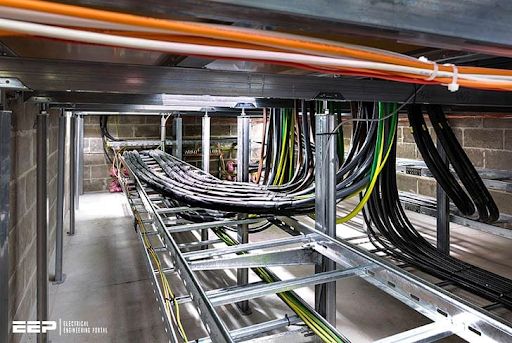10 Key AI Optimization Techniques for Your Fiber Channel Infrastructure

It is very essential to have visibility that will indicate how your infrastructure is performing day in and day out. Continuous performance monitoring gives you the time to detect the sources of problems before they result in sudden stoppages or serious crashes of the system. A main set of statistics to monitor may comprise interface usage, response time, throughput, and error rates.
Additionally, the artificial intelligence (AI) performance baseline is an important measure of improvement to detect the impact of any changes and forecast demand for future needs. It is necessary to be equipped with monitoring tools that gather data from all the components of the network and present it through simple dashboards.
Let us begin our blog by delving into the ten AI optimization strategies for your fiber channel infrastructure.
1. Evaluate Traffic Patterns and Consolidate Underutilized Links
By analyzing historical traffic patterns across your fiber channel environment, you can identify links that are consistently underutilized. Consolidating multiple low-traffic links onto a single high-speed connection is an easy way to optimize utilization.
Start by looking at links running below 30% capacity on average. Consider decommissioning these links and redistributing their traffic loads. This will free up ports that can be reallocated where needed to support business growth or new application workloads.
2. Right-Size Your Zoning and LUN Masking
Proper zoning and LUN masking are essential for security and performance in a fiber-channel SAN. However, overly restrictive configurations can negatively impact efficiency.
- Ensure your zoning and masking policies only grant access to resources on an as-needed basis.
- Avoid assigning entire LUNs or groups when only small subsets are truly required.
- Similarly, keep zones as small as possible instead of overly broad to reduce unnecessary traffic.
Regularly review access rights and prune anything no longer justified. Striking the right balance maximizes both security and performance.
3. Check for Outdated Drivers and Firmware
The network uses fiber channel technology, which is as complex as any other system that has software maintenance needs. Dated proprietary drivers, firmware and utilities are likely to have various issues, such as poor function, stability or security, after a decent amount of time. Make sure to include checking all the maintenance components for new updates in your routine.
Many artificial intelligence (AI) vendors support auto-monitoring and alerts for patches & critical updates. In addition to the hardware described, for third-party or legacy equipment, it is also required to make sure versions are up-to-date, and online, you may search for a newer release.
You have thus moved a step closer to finally accomplishing your dream of having a world-class business empire by actively dealing with gaps in your software.
4. Consider Consolidating Multiple Headends
Maintaining separate fiber channel headends (also called fabric switches) across different physical locations introduces inefficiencies.
- Too many smaller headends increase management overhead and decrease overall utilization across the infrastructure.
- Consolidating multiple smaller headends into a single larger centralized headend can simplify operations while driving better performance.
- Larger chassis switches provide more ports, bandwidth, and fabric services in a single managed domain.
Carefully evaluate your topology for opportunities to reduce headend count through consolidation wherever practical.
5. Right-Size Storage Allocations with Thin Provisioning
Tiering or thin provisioning should be adopted to alleviate the overprovisioning of volumes and the unpredictability of storage requirements in many SANs.
While this takes away room from running out of space, it is also like wasting the infinite sources of this earth too. Take advantage of thin provisioning features by allocating physical storage only when required rather than assigning it all upfront.
6. Tune Multipathing Settings for Load Balancing
The multipathing functionality in fiber channels controls how I/O paths are distributed across network connections for load balancing purposes. By default, most arrays use a simple round-robin algorithm that does not consider path characteristics.
You can achieve better performance by tuning these settings. For example, prefer paths with the lowest latency, highest available bandwidth, or no errors. Vendors offer utilities to test paths and manually adjust their priority or weight. Proper multipathing is key for maximizing throughput from storage to servers.
7. Evaluate Port Configurations and Topology
Does your fabric design and port configuration make logical sense? Over time, changes can result in unused or underutilized ports, unnecessary hops between devices, and other irregularities that hurt efficiency.
Review your entire fabric topology with a critical eye. Consolidate ports onto as few switches as possible to reduce complexity. Eliminate unused ports or reassign them where needed.
8. Tune QoS Settings to Prioritize Critical Workloads
QoS settings let you specify application and workload requirements by controlling bandwidth distribution across the fiber channel network. To be more precise, QoS settings assign different bandwidth sizes (the amount of information that can flow in a given time) by user or standard.
For instance, streaming (video watching) usually needs more bandwidth support than data (pedagogy via the Internet). On the other hand, a switch by itself is not capable of differentiating between the priorities of traffic and, therefore, has no means of giving equal treatment to all traffic.
9. Validate Switch Configuration for Accuracy
It’s surprisingly easy for fabric switch configuration files to fall out of sync with the actual deployed environment over time. Even small discrepancies can introduce instability. To ensure everything matches reality, regularly validate your switch database contents.
Cross-reference the World Wide Names (WWNs) of connected hosts, zoning definitions, and other parameters against what’s physically plugged in. Artificial intelligence (AI) tools simplify this process with point-and-click topology displays. Any mismatches identified should be resolved by correcting the configuration database as needed.
10. Automate Where Possible for Efficiency
Once you have optimized your fiber channel infrastructure, look for opportunities to automate routine management tasks using scripting. This frees up valuable time and prevents human errors.
Tasks like monitoring, reporting, backup/restore, patching, and configuration deployment are all candidates for automation. Pursue integration with your existing monitoring, configuration management databases (CMDBs), and other systems as applicable.
Aim to minimize manual intervention wherever you can appropriately implement automated processes instead. This ensures optimization efforts are sustained over the long run.
Final Words
Taking a proactive approach to fiber channel infrastructure optimization delivers major benefits. By leveraging best practices for monitoring, rightsizing resources, maintenance, design simplification, and automation, you maximize performance, efficiency, and manageability. Starting with these 10 key tips provides a solid foundation for keeping your SAN humming along at peak effectiveness.










